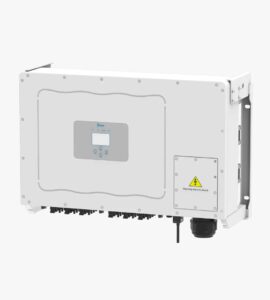Metering is no longer limited to the conventional application of billing alone. Empowered with smart communication technology, metering has lately opened several avenues from which stakeholders can benefit. It also provides useful information for analytics, pricing mechanisms, demand response, load curtailment, revenue protection, demand forecasting, energy management, etc. Services like installation, billing, analytics, improvement in billing efficiency, renewable integration and management, etc. have all become part of the wide horizon of metering solutions.
The Indian metering industry has matured since its inception five decades ago, and in partnership with all stakeholders, it is poised to take on the challenging journey of making Indian utilities smart and sustainable. We aim to gather a cross-section of knowledge from stakeholder groups under a single umbrella and channel all the efforts in the direction of building a sustainable and inclusive future that is beneficial for all.
“Metering India” has created diversified themes in the past like “Revenue Management,” “IT in Metering for Efficient Power Distribution,” “Smart Indian Dimension,”etc. Today, “smart” features are impacting our lives like never before. The “business as usual” scenario of a few years ago has been reinvented by smart devices. The transparency and trust challenges being addressed in relation to resource conservation in every form have taken over our lives like never before. At this juncture, it is imperative for us to take stock of our smartness for sustainability.
The power sector has seen the faces of energy meters change, from the Ferrari meter to the smart meter. Standardization has to keep pace with the changes in technology and market demand. The development of communication technologies and their integration with energy meters has brought enormous changes and made it possible to reform the power sector. The Bureau of Indian Standards has kept pace with international standards in the development and maintenance of metering standards. The power sector is in a transition phase of adopting smart meters and AMI in almost all developing and developed countries. Standards play a very vital role in the development of any country and, in turn, globally. A standard is an agreed-upon way of doing something in a consistent and repeatable way. Standards set minimum requirements in terms of safety, reliability, efficiency, and trust.
Standardization is key to the development of any sector. Without standardization, globalisation cannot be envisaged. The energy meter is the vital element of the power system. The sustainability and existence of utilities depend on their revenue collections, which cannot be achieved without reliable, accurate metering. With the advent of advanced metering infrastructure, metering is a central nerve of the entire AMI and power system management. The standardisation of meters and its harmonisation with the development of technologies have helped achieve the goal of the power sector. The success of the rollout of smart meters across India will mostly depend on the quality of the smart meters. The relevant standards will have to keep pace with the changes in technologies and market demand. This article has explained the latest developments in the IS and IEC metering standards, which will help the stakeholder groups prepare themselves to cope with the changes in the standards.
Power Secretary Alok Kumar said safety, quality, and design should be the key parameters for the manufacturing of smart meters. “I urge the manufacturers to think of innovative ways to reduce the price of the meters by half without compromising on quality.” “We have improved the loss reduction aspect and are working on the expansion of the RDSS scheme and smart distribution,” Kumar said while addressing industry body IEEMA’s “9th Metering India 2022.” Besides, IEEMA should focus on building the capacity of the utilities and finding opportunities to change conventional meters into smart meters with a sustainable disposal option, he said.
As per industry estimates, a smart meter costs around USD 50, including manufacturing and installation charges. Around 25 crore smart prepaid meters are to be installed by March 2025 under the Revamped Distribution Sector Scheme (RDSS) at an outlay of Rs 3.3 lakh crore. Amit Kumar, Chairman of the IEEMA Meter Division and Vice President of Schneider Electric India Pvt Ltd, said the combined annual production capacity of the Indian meter industry is more than 100 million smart meters, which is sufficient to meet the 2025 target.
“These new-age smart meters help reduce the operation and maintenance costs and enhance the quality of service.” “Metering is an important infrastructure for the country.” Jitendra K. Agarwal, joint MD of Genus Power and chairman of Elecrama 2022, said: The Indian Electrical and Electronics Manufacturers’ Association (IEEMA) has around 1,000 member organisations across the entire value chain in power generation, transmission, and distribution, equipment, and electronic goods. Elecrama is part of IEEMA.
Now is the time for smart meter adoption in India
The technology of smart meters has significant potential and impact. An innovative and wide-ranging solution, smart metering uses digital technology to enable a two-way flow of electricity and information. This technology has been in use for many years across countries and has shown effectiveness and high reliability in terms of electricity consumption as well as demand and supply management.
Talking about India, currently, the world’s largest electricity smart metering programme is underway in the country. As announced by the government, India’s smart meter national programme (SMNP) aims to replace 250 million conventional meters that will help increase the efficiency of energy consumption and monitoring and raise the annual revenues of discoms. In August last year, the Union Power Ministry also issued an advisory asking central ministries and departments to direct organisations under their administrative control to ensure that a switch to prepaid smart meters is made on a priority basis. The technology of smart meters further provides a boost to the Indian government’s efforts for digital transformation in the country.
Smart meters arise as an important part of the overall Advanced Metering Infrastructure (AMI) solution, which measures real-time energy consumption and sends the data wirelessly to an in-home display unit. Smart meters allow people to understand what energy they use, how they use it, and how they could consume it more efficiently. Besides, by having access to this information, the supplier is empowered to make more compounded decisions in more efficient energy distribution planning, which further leads to a chain of positives in the form of reduced power wastage and long-term carbon and financial savings.
Around the globe, a considerable shift to renewable energy sources is being witnessed. It is important for companies to have precise data to balance loads at a time when consumers are looking for better control over their energy usage. Smart meters meet both these demands while also introducing potential questions around security and maintenance, from privacy to technology upgrades. These concerns can be addressed with a secure smart meter and reliable connectivity.
The answer to the defined challenges is:
Companies that can demonstrate that their devices are reliable and secure can also gain the trust of key metering stakeholders. It is critical that smart meter manufacturers provide future-proof, seamless connectivity for their meters, according to strict Service Level Agreements (SLAs). As smart metres are set to operate for many years, manufacturers and grid managers need to ensure that their connectivity and security architecture will be reliable and upgradable over a long lifetime while keeping TCO (Total Cost of Ownership) within budget.
To ensure a successful smart metering deployment, it is critical to ensure the following:
Smart meter security: cyber security is paramount to prevent data breaches and hacking. A device or data breach could endanger customers’ privacy and even bring down national grids if control is taken over a multitude of meters. Smart metering security can be achieved with built-in security into devices, allowing strong encryption and digital authentication mechanisms, as well as remote credential management over long periods.
Resilience –Smart meter manufacturers should be able to prove that their devices are future-proof and can work long-term, as smart meters will be deployed in customers’ homes for years.
Reliability: Smart meters are also required to send reliable data to the utility provider, as this ensures accuracy, which is crucial for balancing the grid. Therefore, continuous smart meter connectivity is essential.
Rapid Deployment: Deployment time needs to be rapid as the bidding process is usually long.
Controlled TCO (total cost of ownership): Utilities and smart meter manufacturers undertaking transformational managed service projects need to ensure that performance conforms to SLAs. They should ensure that the costs are at or below the business case calculation. Predictive maintenance and optimum network usage throughout the meter’s lifecycle are key to this.
As smart meters need to offer future-proof and efficient connectivity over long lifecycles, cellular technology appears like the right answer to many challenges. It can provide dedicated low-power and long-life connectivity, flexibility of installation, reliable data flow, and remote meter maintenance, enabling over-the-air issue detection and resolution.
Smart meters, for India, are seen as one of the key factors for the success of the “Reforms Linked Result Based Scheme for Distribution,”the country’s proposed Rs. 3 trillion distribution reform schemes, which calls for completing a compulsory smart metering ecosystem across the distribution sector. This follows through the levels, starting from electricity feeders and reaching the consumer levels. The switch from conventional metering to smart metering has been initiated in the country, and factors such as existing reform footprints, availability of resources, Aatmanirbhar manufacturing, and above all, an urgency to positively aid existing discoms make this switch even more viable today.
We must be cautious to avoid tripping over smart meters
Smart meters, through automatic bill generation and remote disconnection, are expected to significantly improve metering and billing efficiencies and, in turn, increase discom revenues. The revenue gaps of discoms have been increasing, exacerbated by the pandemic, even as their dues to power generators have been piling up, now estimated at around 70,000 crore. To address the predicament of discoms, significant further investment in smart meters is being proposed by the Center, with a large-scale roll-out justified on expectations of a vast improvement in payment collection efficiency. However, a need-based assessment, especially of small consumers, is crucial before state electricity regulatory commissions (SERCs) approve state-wise roll-outs.
Our analysis of six states that have already rolled out smart meters for a few lakh consumers shows that before implementation, effective cost-benefit analyses were either not conducted or not shared with the public. Neither is there any disclosure of on-field technical challenges, nor is information available on how discoms plan to operationalize the full benefits of smart meters to address consumer pain points.
The true cost of the project’s implementation and an assessment of the benefits achieved should be critical before smart metering is universalized. Without sufficient regulatory oversight, the imprudent costs of such programmes could be passed on to consumers. This highlights the need for a transparent, accountable, and participatory mechanism to ensure that the full benefits of such large-scale investments are indeed obtained.
Several case studies from other countries suggest that without proper consumer engagement, smart metering programmes can face challenges in terms of consumer acceptance. It is hence necessary that discoms invest in engaging consumers to generate trust in these new systems and ensure that the software developed to manage these meters is tried and tested. On their part, SERCs can safeguard consumers by revising their regulations to include specific details on performance standards for smart meters.
Data privacy is another issue. Smart meter data can reveal sensitive information that is decipherable from electricity usage patterns. Ahead of India’s personal data protection legislation, the ministry of power should evolve a framework for handling smart meter data and finalize it in consultation with stakeholders. Regulators should put in place a set of provisions that cover various aspects of data-sharing protocols, purposes, grievance redressal, security, etc. Discoms should appoint data protection officers to ensure the requisite level of consumer privacy. The rights of consumers must be upheld.
Conclusion
In conclusion, smart meters certainly have the power to improve the revenue recovery rate of discoms and ensure better electricity services to the consumer. But such outcomes can be expected only if our roll-out programmes are executed well. Discoms have taken up a big challenge in moving towards the automation of their interface with the consumer. In the country’s haste to achieve targets, though, there’s a risk that the consumer might lose trust in the programme. Roll-out evaluations that can guide mid-course corrections would help smart meters brighten this sector’s prospects.






